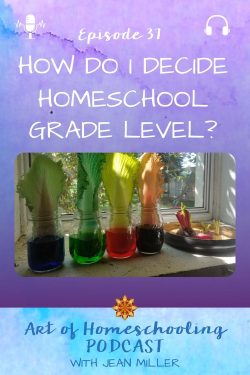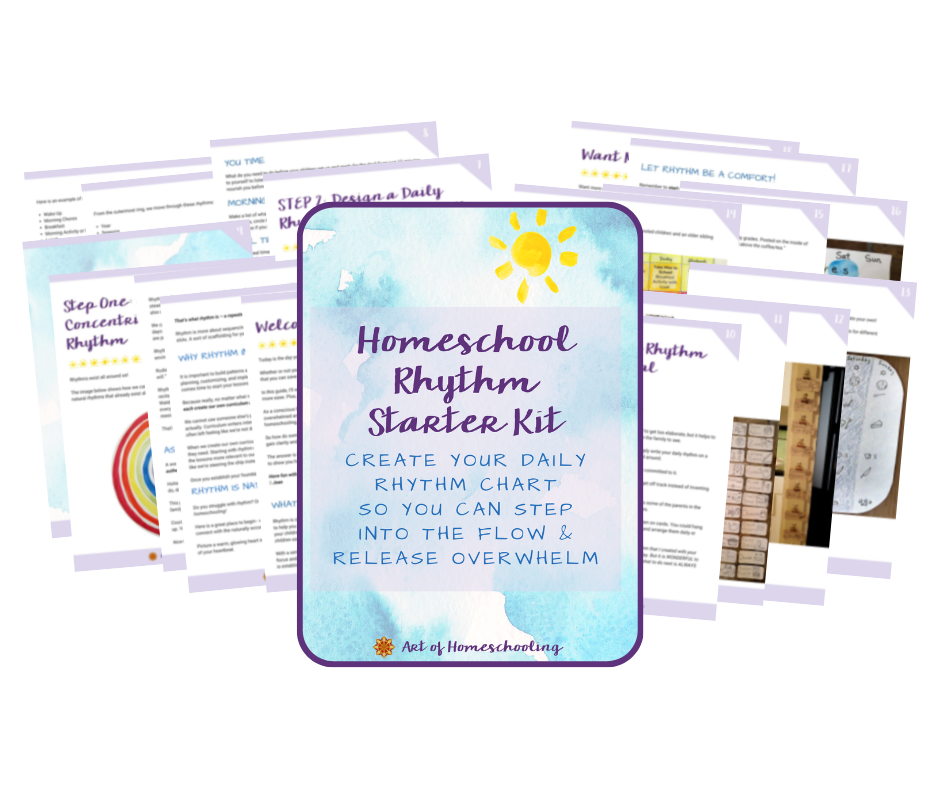Episode 37
As a homeschooling mentor, I’m often asked, “How do I decide the grade level for my homeschooled child?” Are you wondering how to decide homeschool grade level?
Or “I thought my child was in such and such a grade, but now I’m not so sure!”
And this really tricky one, “My child has a summer birthday, so how do I decide what grade he or she’s in?“
So today, I want to share with you my best advice on grade placement. And of course, as a homeschooling parent, the decision is yours!
You know your child best and these decisions are made based on observation and intuition. Along with a few general guidelines, rules of thumb really, that I’ll share with you here.
Homeschoolers Have Flexibility
Before we jump in, I want to remind you of a few things you already know!
First of all, as homeschoolers, you have a lot more flexibility with grade placement than would be available in a brick and mortar school.
For example, down the road when grade level becomes more relevant, we can easily assign our child(ren) a grade level that meets their needs. Also, we can start the year in one grade and move up at any point during the year. We can start a new grade level in January if that seems best. And we can even combine our children of different ages and grade levels for multi-age, family learning.
Then why is grade placement so important?
Grade placement determines the curriculum material that will nurture your children developmentally. Themes, main lesson blocks, and stories that are developmentally appropriate will reach the child in just the right way, creating that spark of imagination, that click of deep engagement.
But with skills development, grade placement is really less important. With math and writing and reading, we want to start where the child is and help them progress from there along the path of learning.
I hope this helps relieve some of the pressure you might be feeling to get the grade placement exactly right!
It’s really a matter of trying some things out, using our intuition, observing, and making our best guess, following this general rule of thumb.
Do a Little Research
Ok, so in order to understand the general rules of thumb for grade placement, I would recommend researching grade placement from three different perspectives. Specifically, the cut-off date for beginning first grade.
Find out when your child would enter first grade:
- According to your local public school.
- Per the Waldorf school closest to you.
- Considering Rudolf Steiner’s recommendation that a child should have seven springs before entering first grade (counting of course the year a child is born as the first spring). So that would be more like a child turning 6 in April the spring before starting first grade.
But remember, you get to choose!
So then, with the exception of summer birthdays, my general recommendation is that the first grade child is 6 turning 7 sometime during the school year. I’m not one to give recommended dates because I want to empower you to decide based on your own observations and intuition.
Keep on reading for some tips about what to observe!
And what about those tricky summer birthdays?
There are lots of places to gather insight when considering when a child with a summer birthday should start formal schooling.
For my summer birthday kiddo, I made the decision based on his early developing verbal skills and the fact that we would be doing a lot of multi-age learning with his brother, who was 16 months older. I’m still not sure if I made the right decision, but it all worked out!
Observations to Consider
What to look for in a child who’s ready to move from kindergarten into first grade?
Rudolf Steiner, the founder of Waldorf Education, believed young children really need their energy forces for organ and brain development prior to the age of seven.
He suggested that only after the age of seven should formal lessons begin. And that’s why Waldorf kindergartens are play-based with lots of stories and movement and singing. There are plenty of pre-literacy and pre-math skills and spatial development going on. But no formal lessons until first grade.
So here are just a few signs of first grade readiness to consider:
- The change of teeth, when children start to lose their baby teeth and their adult teeth come in.
- A child’s physical body begins to resemble an adult body in terms of proportion. One way to see this is by asking a child to take one arm up over their head and try to touch the opposite ear. If they can, this indicates the lengthening of their arms and that change of proportion.
- Children begin to be able to picture whole scenes in their head – a critical component to learning. Because for example, a lot of reading is picturing what’s happening and what we think comes next.
- Children often start to exhibit a very clear plan for their play and even begin to plan ahead to set things up in a certain way. This is again a sign that the child is picturing things in their head and can see next steps.
These are just a few signs to look for. And all begin to indicate that a child is ready to engage in more thinking and learning activities.
For older children, really in any grade, another important thing to observe is how the stories recommended for their age from the Waldorf curriculum – how those stories are meeting them.
Does the child take the stories in? Do the stories seem to connect with and nourish their souls, or nourish them on a deeper level? If not, perhaps your child isn’t ready for that material yet.
I hope this discussion gives you some good, specific tools on which to base your decision! And I hope I’ve helped you to relax a bit on the grade placement question, too!
How to decide homeschool grade level?
Observation, intuition, and a general rule of thumb.?
Resources
I have a list of traditional block topics for each grade here: Waldorf Block Rotation for Homeschoolers, Grades 1-8
If you find you want more guidance on your particular child and your particular family situation, I invite you to book a Mentor Session with me so we can talk and I can help you decide. Check out all the details here: 1:1 Mentor Session with Jean
Also, you can find many articles and free resources for further reading about Waldorf Education and first grade readiness here: The Online Waldorf Library
Rate & Review the Podcast
If the Art of Homeschooling Podcast has inspired you, I’d LOVE it if you could rate and review the podcast on your favorite podcast player! Reviews can be left on Apple Podcasts (iTunes), Podcast Addict, or Stitcher.
Or simply pop on over to lovethepodcast.com/artofhomeschooling and choose where you want to leave your review.
And if you want to show your appreciation for the Art of Homeschooling Podcast, you can buy me a coffee!
Never Miss an Episode!
 Follow & Listen:
Follow & Listen:
Check Out All the Episodes Here (<<< Click that link!)
Save or share this encouragement on Pinterest with the image below.



